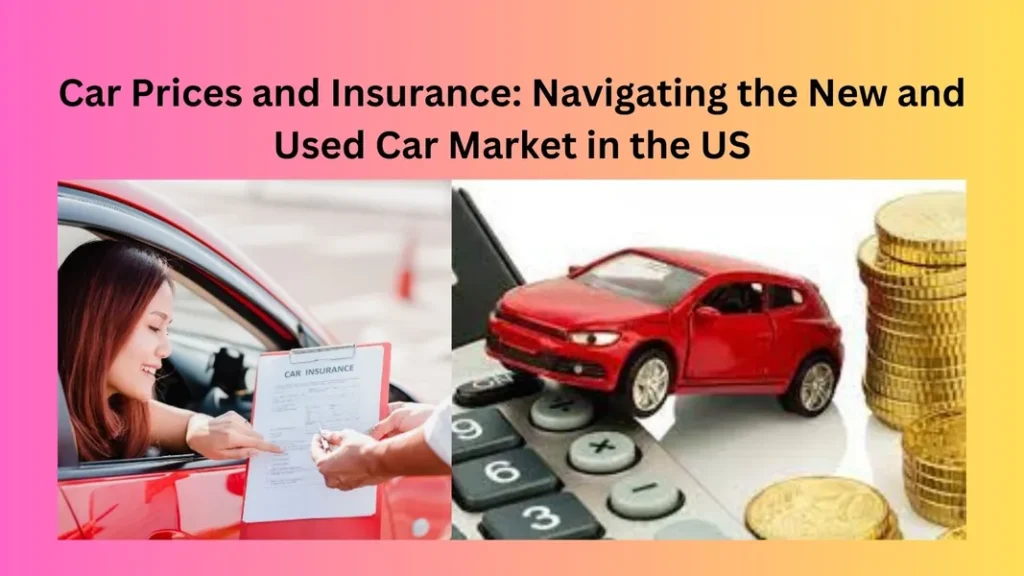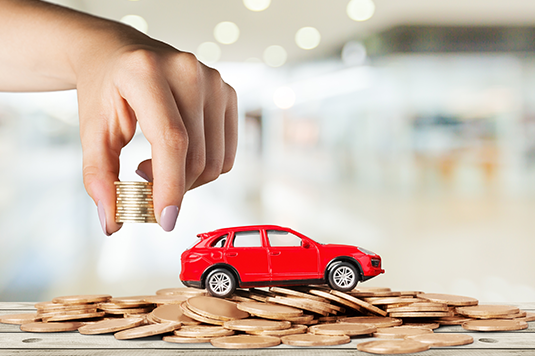When it comes to buying a car in the US, it’s not just about finding the perfect ride—there’s a lot more to consider. From figuring out the best price to making sure you’re covered by insurance, the process can feel a bit overwhelming. But don’t worry! This guide is here to break down the essentials so you can confidently navigate the new and used car market in the US.

Whether you’re looking to buy a brand-new vehicle or a pre-loved gem, we’ll dive into what affects car prices, how insurance ties into your decision, and tips to get the best deal.
1: Understanding the Current Car Market in the US
Buying a car is one of the biggest financial decisions most of us will make, right? Whether you’re a first-time buyer or upgrading your current vehicle, the market can seem tricky. But what’s driving these prices?
1: Factors Influencing Car Prices
Car prices aren’t just plucked out of thin air. They’re influenced by a range of factors. Some of the key elements to consider include:
- Supply and demand: With global supply chain issues, especially after the pandemic, the production of new cars has slowed. Fewer cars mean higher prices.
- Inflation: Inflation affects almost everything, and car prices are no exception. It can push the cost of materials up, which manufacturers pass down to buyers.
- Technology advancements: New cars are packed with cutting-edge tech like electric vehicle (EV) systems, driver-assist features, and entertainment tech. More tech often equals a higher price tag.
- Manufacturer’s suggested retail price (MSRP): This is the price a manufacturer recommends for a car. But remember, dealerships can adjust it based on local demand.
2: How the Used Car Market Differs
Now, if you’re leaning towards a used car, you might think you’ll be saving big bucks. And you’re not wrong! Used cars tend to be cheaper, but the prices here are affected by different factors.
- Mileage: The more miles a car has racked up, the cheaper it usually is. But too high, and you might face hefty maintenance costs down the road.
- Car’s condition: A car that’s been well-maintained (regular oil changes, no major accidents) will cost more than one that’s been through the wringer.
- Market demand: With fewer new cars on the market, the demand for used cars has skyrocketed. So, even second-hand cars are sometimes pricier than usual.
2: The Role of Insurance in the Car Buying Process
Okay, so you’ve got an idea of how car prices work, but what about insurance? It’s another important piece of the puzzle when it comes to budgeting for your new or used car.
1: Why Car Insurance Is Important
We all know driving without insurance isn’t just risky—it’s illegal in most states. But beyond that, insurance is your safety net. Whether it’s a fender bender or something more serious, the right insurance can save you from forking out thousands of dollars in repairs.
2: Factors That Impact Insurance Rates
Much like car prices, insurance premiums are affected by a range of factors. Here’s what you need to know:
- Age and driving experience: Younger, less experienced drivers are considered higher risk, so their insurance rates are typically higher.
- Type of car: Newer cars, especially luxury or sports cars, cost more to insure because they’re pricier to repair or replace.
- Location: Where you live can significantly affect your insurance rate. Some areas with higher rates of accidents or thefts will lead to pricier premiums.
- Driving record: If you’ve got a clean driving history, congratulations! You’ll likely pay less than someone with multiple tickets or accidents.
- Coverage options: The more coverage you opt for, the higher your premium. But remember, while skimping on coverage might save you money upfront, it could cost you more in the long run if something happens.

3: Buying a New Car? Here’s What to Expect
1: Advantages of Buying a New Car
Thinking of going for a shiny new car? Here’s what you’ll love:
- Latest technology: From safety features to in-car entertainment, new cars have the latest bells and whistles.
- Warranty coverage: New cars come with manufacturer warranties, giving you peace of mind for the first few years.
- Better financing options: Often, dealerships offer better financing rates for new cars, which can make a big difference over time.
2: The Downsides of New Car Purchases
But hold up—new cars aren’t all rainbows and butterflies.
- Depreciation: As soon as you drive a new car off the lot, it loses value. In fact, some cars can depreciate by as much as 20% in the first year.
- Higher upfront costs: That new car smell comes with a premium price tag. Expect to pay more, not just for the car, but for insurance as well.
3: How to Save Money on a New Car
- Wait for sales: Many dealerships offer sales during specific times of the year, like the end of the month, year-end clearances, or during major holidays.
- Negotiate: Don’t be afraid to haggle! Dealerships often have room to adjust prices or throw in extras.
- Consider leasing: If you like driving the newest model but don’t want to commit to ownership, leasing might be a good option. Just be mindful of mileage limits and lease-end costs.
4: The Ins and Outs of Buying a Used Car
1: Benefits of a Used Car Purchase
A used car can be a fantastic option, especially for budget-conscious buyers. Here’s why:
- Lower price: The most obvious perk—used cars are cheaper. And if you’re okay with a model that’s a few years old, you could save big.
- Slower depreciation: Since the car’s already gone through its steepest depreciation, you won’t lose as much value over time.
- More car for your money: You can often afford a higher-end model used than you could brand-new.
2: Risks Involved with Buying Used
Of course, there are some potential downsides.
- Unknown history: Unless you’re buying from a certified dealership, it’s tough to know a used car’s full history.
- Higher maintenance costs: Older cars are more likely to need repairs, and those costs can add up fast.
- Outdated features: If you’re a tech lover, you might miss out on some of the latest gadgets and safety features.
3: How to Get the Best Deal on a Used Car
- Check the car’s history: Always run a vehicle history report. Services like Carfax can tell you if the car has been in an accident or has any outstanding issues.
- Get an inspection: Before signing anything, have a trusted mechanic give the car a thorough check-up.
- Negotiate like a pro: Just like with new cars, don’t hesitate to haggle on the price. You might be surprised at how much wiggle room there is.
5: How Insurance Costs Differ Between New and Used Cars
1: Insurance Costs for New Cars
- Higher premiums: New cars usually cost more to insure. Why? Because they’re worth more and can be more expensive to repair or replace after an accident.
- More coverage: You may be required to have comprehensive and collision coverage on a new car, especially if you’re financing it.
2: Insurance Costs for Used Cars
- Lower premiums: Since used cars are generally worth less, they often come with lower insurance premiums.
- Less required coverage: Depending on the age and value of the car, you may be able to get away with less coverage, saving you money on insurance.
6: Tips for Combining Car Prices and Insurance to Maximize Savings
1: Bundle Your Policies
Many insurance companies offer discounts if you bundle your auto insurance with other policies, like homeowners or renters insurance. Why not save on more than just your car?
2: Increase Your Deductible
If you’re willing to take on a little more risk, raising your deductible can lower your monthly insurance premium. Just be sure you can afford to pay the deductible if something happens.
3: Drive Safely
Good drivers get rewarded with lower premiums. If you’ve had a few tickets in the past, driving carefully for a few years can help you earn a lower rate.
4: Shop Around for Insurance
Just like car shopping, don’t settle for the first quote you get on insurance. Shop around and compare quotes from different providers. You might find a significant difference in rates.

Conclusion
Navigating the car buying process—whether for a new or used vehicle—can feel like a maze. With car prices fluctuating due to global factors and insurance costs tied to everything from your driving record to where you live, there’s a lot to consider. But with the right knowledge, you can confidently step into the market, balance both car prices and insurance costs, and drive off in the perfect vehicle without breaking the bank.
FAQs
1. How much should I budget for car insurance?
Car insurance can vary widely based on factors like your age, location, and the type of car you’re insuring. On average, expect to pay anywhere from $500 to $1,500 annually.
2. Is it better to buy new or used when considering insurance?
New cars tend to have higher insurance premiums, while used cars are typically cheaper to insure due to their lower value.
3. Can I negotiate car insurance rates?
While you can’t haggle like you would for a car, shopping around and comparing quotes can help you find a better rate.
4. What’s the best time of year to buy a new car?
End-of-year sales, Black Friday, and even the end of each month can offer better deals on new cars as dealerships try to hit sales quotas.
5. Does a used car come with any insurance benefits?
Yes! Used cars often come with lower insurance premiums, making them a more affordable option overall.